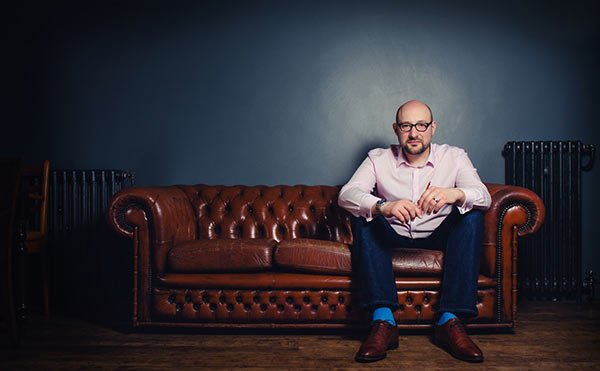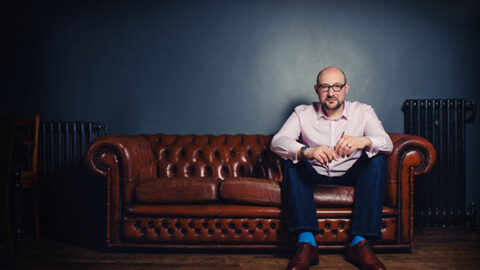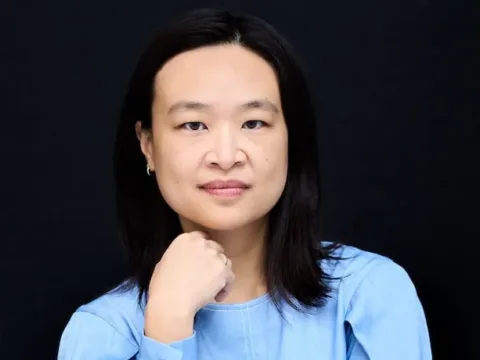Following his 2013 opera Emily, composer Tim Benjamin is back this August with Madame X, an operatic exploration of the darker side of the art world featuring the young lovers Masetto and Zerlina, Masetto’s agent, and wealthy collectors. We asked 5 questions to Benjamin.
I find it curious that your two lovers are named Masetto and Zerlina, ostensibly after the pair in Don Giovanni, and that you have a similar character of questionable morals, Mr. Wilmore. Would you say that Madame X is a reimagining of Don Giovanni?
Don Giovanni was indeed one of several starting points for the opera. However, Mr Wilmore is not the only one with questionable morals – all of the characters are questionable. Madame X is an opera about art, including in that definition an “opera about opera”, and you can find allusions to several other operas in there too. But the link with Don Giovanni is special, even in that context. The equivalent to the character of the Don is not any one character in Madame X, it is instead “money”, and the Don’s victims are not women, but “art”. In Madame X, money does the exploiting of art. So who gets dragged down to hell at the crux, and who does the dragging? You’ll have to come and see it to find out…

If it is indeed a reimagining, why did you decide to keep Zerlina as a “vulnerable” fiancee, instead of making her into a stronger character who might be a force to be reckoned with?
Now I know the plot, so I have an unfair advantage, but this is actually a very funny question. Let’s just say she’s not all that vulnerable!
How did you decide to set the opera in the high art world? Did you have any real-life experiences or influences, or were you just inspired by the intrigue?
As an opera “about art”, I took high art / painting as the initial touch-point because when you say “art” to people, they immediately think of paintings. Of course they then start to think of all the other types of art, and then you end up arguing about “what is art?”, and if you are really lucky you then argue about “what is music?”. These are some of the questions that are lurking beneath the surface of Madame X.
I wanted to get at these thorny, intractable questions by instead tackling the related question “what is art for?” – this of course has been famously addressed by Oscar Wilde: “all art is quite useless” (and the more useless, the better it is).
In addition to Masetto (a painter) and Zerlina (his fiancée), there are three major characters who exploit art (via Masetto), i.e. Mr Wilmore (representing “new money” or perhaps the “new world”), Lady Brannoch (representing “old money” and the “old world”), and Botney – who is much more temporal, representing commerce, business, and corruption. We also have “the public”, represented by two married couples, who come along to see Masetto’s work and make all the kinds of comments that you overhear in art galleries (and in the interval at classical music concerts…), the kind of comments that make your toes curl, your hackles rise, or your coffee come out of your nose.
All of these characters are “users” or consumers of art, exploiting art for their own ends and viewing it, interpreting it through their own agenda.
The painter, too, is another “user” of his own art: why does the artist create art? My character Masetto only ever speaks (sings) the titles of well-known paintings (“The Laughing Cavalier”, “Liberty Leading The People”, etc). Why? Well, we are then forced to interpret Masetto, in a similar way to how we instinctively try to interpret paintings and music – whether or not those works are intended to be interpreted, even, and inevitably contrary to any intention of the creating artist.
The only character in the opera who is not a “user” of art is Zerlina. That’s because she’s the subject of all the art in the opera: Masetto is incapable of painting anyone else. This has far-reaching consequences as the plot unfolds to the grisly climax…
When many composers are looking forward to new methods and sonorities, what made you decide to return to the familiarity of Baroque music?
I find it interesting to face criticism for turning to the music of the past, and to reject (in this opera, anyway) supposedly “new” methods and sonorities. I don’t see any need to deliberately try and be “new” by devising brand new techniques, when there’s so much that can be done with existing techniques. The very act of creating a piece, regardless of the content, is to create something “new”.
Now I know what you’re getting at, of course, you aren’t just interested in semantics.
I’ve used other music, not just the Baroque, although that is a key ingredient. You’ll also find music that reminds you of Mozart, of Beethoven, of Brahms, Strauss (all of them), Elgar, Britten, and more. This is for exactly the same reason as Masetto uses only the titles of famous paintings to communicate. They are familiar, and we think we know them (although we don’t, not really), we think we know what they mean (but we don’t), and so we think we are on firm ground (and we’re not). From a composer’s point of view, this allows for some great opportunity for trickery, to play on an expectation and by subverting it, to say something really new.
In composing Madame X, I didn’t have any need to use extended techniques, impossible rhythms, electronic magic, far-out mathematics and all the other tools of the avant-garde in order to do what I wanted to do: to create some music that has layers of meaning, that invites the listener to find something new about themselves in it, or if they prefer to remain at the surface, to enjoy a provocative plot and some playful music.
Just one further point on the Baroque. That’s probably the dominant musical influence in Madame X, and it’s there because I wanted to re-visit the ancient “doctrine of affections”, the principle of using well-known reference points to trigger an “affect” in the listener, and to play with these “affects” to do something unexpected, to trip up the listener and reveal something new. Despite all the considerable merits of working with “new sonorities and methods”, I required something that had immediate familiarity in order to play this game, and exclusively diving into the latest techniques of Modernism simply wouldn’t achieve that.
But just to trip you up a little, already … I have in fact used some of these more recent techniques in the opera for precisely this purpose. A tour through the world of art would hardly be complete without the avant-garde, would it?
Do you think that the chamber sized orchestration makes this opera more accessible to community opera companies, and possibly even larger companies in the recent times of budget crunches?
Apart from considerations of musical style and sound-world, I selected this particular orchestration (string quartet, flute, clarinet, harpsichord / chamber organ) precisely to make the production easy to tour, and with a budget in mind, of course. Another factor in the selection was to choose instruments allowing me to work with players I already know, and with whom I wanted to work again.
Much else about the opera is created for the same reasons of practicality: there is only a need for one set, for example, and there is huge possible scope for different design approaches, as the historical period is not explicit.
Even the singing parts are designed with flexibility in mind: each of the parts has a potential vocal double in another part, making it somewhat easier to cope with any emergencies.
Our short tour in August this year, of four venues, is going to really test the opera’s design. The four theatres are all completely different: including a small proscenium arch, a huge proscenium arch, a thrust, and a very “open” space.
In terms of the work’s future, implicit in your question … yes, it could clearly be done by companies that have more limited resources, and of course I would be delighted if that happened! The scope of the piece allows it to be done on a variety of scales, and with such a Baroque influence in the score, it can quite easily be re-orchestrated to suit larger ensembles or spaces if required, just as with works dating from that period.
In no way, however, do I intend this as a blue-print for others. There are lots of ways to crack the problem of diminishing budgets, and one of those ways is to actively campaign for increased budgets, and against cuts to funding for the arts from all sources, both public and private. Most importantly, we must endeavour to bring our work to the public’s attention, and to increase the numbers of people coming to see our work. That’s the only sure-fire way to counter the budget crunches. And I’ve chosen to do this in the best way I can: with my modest budget and the most practical set-up I can manage while still delivering what I hope will be a great show.
—
For more info/dates, visit: http://madame-x.co.uk/performances
























